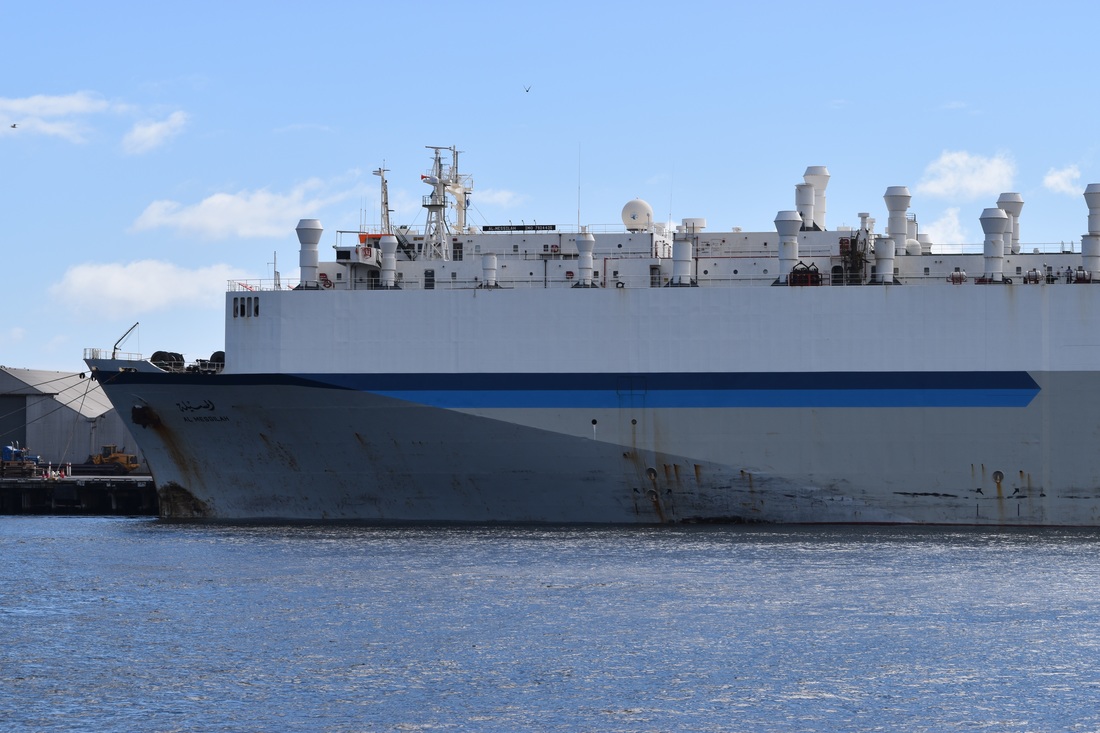|
Yet another experienced live export veterinarian has gone public with concerns about shipping design. Industry scion Dr Peter Arnold, admits that little has changed in ship design and states that "our modern ships [are] being designed for convenience and not the cargo."
Dr Arnold continues "There are literally hundreds of design features on ships that could easily be fixed by designers and engineers to suit the animal first and foremost and still fit into marine design and safety." So, over 50 years to get it right and we don't. The reason seems to come down to the industry saying quoted by Arnold: “If the animals were worth their weight in gold, they would all arrive safely.” Yep, thats right, sadly it is about profit and not animal welfare.
3 Comments
 So much for those modern ships eh. Al Messilah is hardly state of the art, built in 1980, converted from a car carrier in 1995 and 100% reliant on mechanical air supply as it is solid sided. It sailed from Fremantle yesterday with sheep conditioned to a miserable Southern hemisphere Winter heading into the height of a Middle Eastern summer….. And check out the Plimsoll line - the marking on a ship's side showing the limit of legal submersion when loaded with cargo under various sea conditions. This red line (in between all the rust and the marks) disappears as it goes to the bow. Under Marine Orders 43, the trim of the ship has to allow drainage of the livestock pens. This ship appears lower (down) at the bow (front) but would likely drain from the the stern (back). Lets hope no pipes burst and flood the sheep pens as they wont be able to drain. The resulting increase in humidity could result in a fatal humidity spike, especially as the livestock onboard will be close to their physiological limits at this time of year with the existing predicted weather conditions once past the equator. One wonders how often the trim is checked on these ships once they are loaded and before they sail. This one certainly sailed an hour after this photo was taken with the angle of the Plimsoll line unchanged. The maritime fraternity are increasingly interested in the issues of live export. It seems, that apart from recognising the unmistakable odour of livestock carriers on the high seas, the LE trade has been as much a mystery to them as it has been to animal welfare advocates, farmers, veterinarians and the Australian public.
This week Maritime Executive published an interview with VALE regarding an investigative report and analysis of the extreme heat stress mortality event on the Bader III (Voyage 46). Like many such events, it has taken time to investigate: government investigation reports, then FOI requests, then the correspondence with the government etc mean that any such investigations drag out over years. Despite careful analysis and persistence to try and ascertain what really happened on that voyage, we will never know as the government are certainly not telling us. However, we can guess what it was like with 4000 sheep dying of heat stress as co-incidentally, another maritime media, Splash published a very detailed and distressing description of "livestock cooked at sea" from experienced live export veterinarian, Lynn Simpson. |
Archives
June 2024
Categories |

 RSS Feed
RSS Feed
